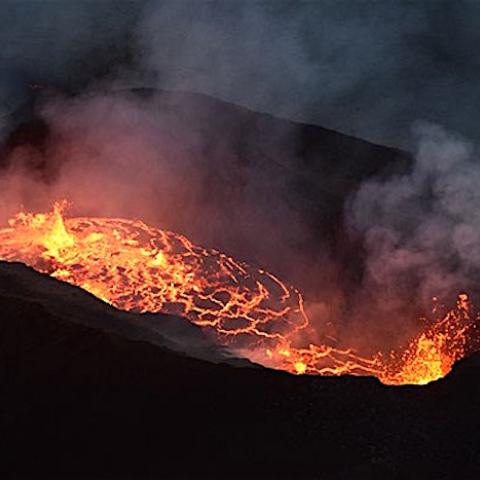
The Thurston Lava Tube at Hawai'i Volcanoes National Park has reopened to the public/Rebecca Latson file
After a nearly two-year closure due to seismic activity at Hawai'i Volcanoes National Park, the park's popular Thurston Lava Tube (Nāhuku) has reopened for visitors.
The lava tube had been closed since May 4, 2018, following a 6.9-magnitude earthquake, and four months of destructive eruptive and seismic activity at Kīlauea that caused its summit crater to collapse.
Nāhuku will be open 24 hours a day, and will be lit from 8 a.m. to 8 p.m. Visitors must bring a flashlight and extra batteries if visiting before 8 a.m. or after 8 p.m.
“We are overjoyed that we can again welcome visitors back to Nāhuku,” said Hawai‘i Volcanoes' acting superintendent, Rhonda Loh. “We appreciate the public’s understanding and support during this long road to recovery following the intense volcanic activity of 2018, and urge everyone to be mindful of potential risks when entering any lava tube.”
During the eruption, several large rocks were dislodged from the lava tube’s ceiling, and new cracks appeared. A National Park Service geomorphologist, mining engineer, and other specialists surveyed Nāhuku and determined it could be reopened if safety mitigations were met. Two crack monitors were installed, and a low-hanging rock is visibly marked off to prevent head injuries. Drainage was improved to reduce standing water on the cave’s floor, and the electrical line to the bathroom was replaced.
The Federal Highway Administration inspected park roads after the eruption and determined the parking configuration at Nāhuku was unsafe and should be addressed. As a result, the stalls perpendicular to Crater Rim Drive have been eliminated. There are now 14 stalls parallel to Crater Rim Drive, two accessible stalls and two stalls for commercial tour vans. Parking is limited to 30 minutes, and there is a new passenger loading and unloading area. Visitors can also park at alternate sites, including Devastation Trail and Kīlauea Iki Overlook.

During the closure, long, delicate roots from ‘ōhi‘a trees that grow on top of the lava tube grew down through the ceiling to touch the floor in some areas.
Along with long, delicate roots from ‘ōhi‘a trees that grew down through the tube's ceiling to touch the floor in some areas during the lava tube's closure, there are also large colonies of white microbial matter on the lava tube walls. Visitors are urged not to touch the lava tube walls or the roots. These unique natural features have likely reappeared due to the absence of people for more than a year.
The lava tube was discovered in 1913 by Lorrin Thurston, a local newspaper publisher and advocate for the establishment of the national park. Its Hawaiian name, Nāhuku, means “the protuberances,” which possibly refers to the lava stalactites that once covered its ceiling. Unfortunately, those have disappeared due to souvenir collectors. Help protect this incredible resource by not touching the walls or delicate tree root systems hanging down. Use only your eyes and feet to experience the lava tube – and ears. The scenic trail at Nāhuku winds through native forest, and endemic birds like ‘apapane, ‘amakihi and ‘ōma‘o are often heard and seen in this area.
Additional disaster recovery continues in Hawai‘i Volcanoes National Park which sustained significant damage from the 60,000 earthquakes that shook Kīlauea between April 30 and Aug. 4, 2018. The park’s recovery progress is regularly updated on the park website at https://www.nps.gov/havo/recovery.htm




 Support Essential Coverage of Essential Places
Support Essential Coverage of Essential Places







Add comment